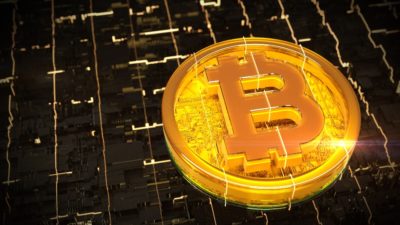The decentralized web has turned into a trillion-dollar sector seemingly overnight. Developers have created platforms for digital art, financial products, and even e-commerce on these so-called Web3 networks. Ethereum (CRYPTO:ETH) is the clear leader, but its dominance is under threat. Rivals like Avalanche (CRYPTO:AVAX) are quickly gaining ground.
Here’s a closer look at Ethereum’s vulnerabilities, Avalanche’s advantages, and the best investment strategy in this new space.
Ethereum’s vulnerabilities
In terms of size, Ethereum clearly dominates the decentralized web. The network has more applications, users, and revenue than any other. The combined value of this ecosystem is currently at US$475 billion (CA$614 billion). That’s second only to Bitcoin.
However, the network is based on a framework that’s looking increasingly outdated. Proof-of-Work has made every Ethereum transaction much more energy and cost intensive. Each Ether transaction releases the carbon equivalent of 17,607 hours of watching YouTube. Altogether, the network consumes 73.19 TWh of energy — equivalent to a small nation.
That’s not the only problem. Ethereum transactions are also expensive. At the time of writing, the average gas fee for completing transactions is 86 gwei, or $9.35. That makes microtransactions and frequent transactions unviable.
Upgrades
Ethereum’s core development team, led by founder Vitalik Buterin, is working on solving these issues. Upcoming upgrades to the network should reduce its energy use by 99.9%. Meanwhile, the team is also working on solutions to the cost issue. Layer 2 protocols could drastically reduce the time and cost of each transaction.
The problem is these upgrades are taking too long to implement. If they’re delayed much longer or fail to live up to expectations, Ethereum’s rivals could snatch its crown. One such challenger is Avalanche.
Avalanche’s potential
Launched in 2020, Avalanche is a decentralized web platform just like Ethereum. The network can support smart contracts. That means non-fungible tokens (NFTs) and decentralized applications (dApps) can also be developed on Avalanche.
However, Avalanche has some advantages. It’s based on the Proof-of-Stake mechanism, which makes each transaction less energy intensive. It can also process more transactions per second (4,500) compared to Ethereum (13). Each transaction also costs less. At the moment, an average Avalanche transaction costs 58 nAVAX, or $0.0000064525.
The network also allows developers to create subnets — private or public blockchain networks of their own.
Unsurprisingly, Avalanche is gaining some traction. The price of each AVAX token has shot up 4,100% from last December. The ecosystem is now the tenth largest and worth $36.8 billion in aggregate. If it catches up with Ether, the upside could be immense.
Better buy?
While it’s difficult to pick a winner, I’m more inclined to Ethereum. Ethereum has the first-mover advantage and the network effects of a larger developer community. Upcoming upgrades should also help it capture Avalanche’s key advantages of cost and efficiency. However, Avalanche may struggle to replicate Ethereum’s network effects and the size of its ecosystem.
In short, Ethereum will gain the upper hand before Avalanche has a chance to beat it.









